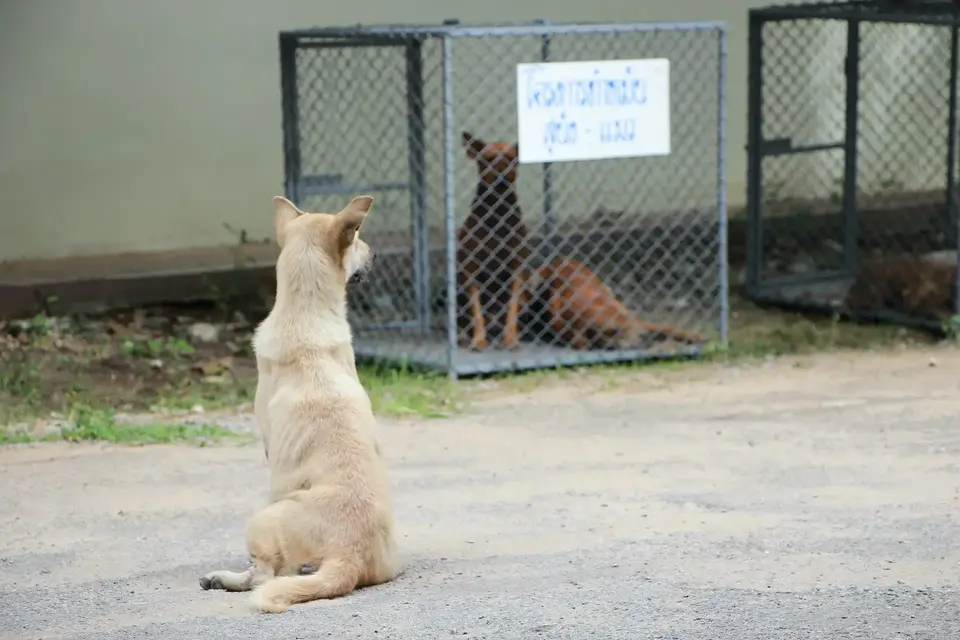Introduction
Adopting a rescue pet is more than just bringing a new furry friend into your home—it’s an act of compassion and a step towards giving an animal a second chance at life. With countless pets in need of loving homes, adopting rescue pets not only makes a profound difference in their lives but also enriches your own. This guide will walk you through the benefits, process, and joys of adopting a rescue pet, and how you can make a positive impact on an animal’s life.
Why Adopt a Rescue Pet?
Benefits of Adopting Over Buying
Adopting a rescue pet comes with numerous advantages. Unlike buying from breeders or pet stores, adoption helps reduce the number of animals in shelters and prevents the exploitation of animals for profit. Additionally, rescue pets often come with vaccinations and spaying/neutering already completed, saving you on initial veterinary costs.
The Impact on the Animal Population
Adopting rescue pets directly contributes to controlling the overpopulation of animals in shelters. Each adoption opens up space for another animal in need and helps reduce the number of animals who face euthanasia due to overcrowding.
Personal Fulfillment and Connection
Many pet adopters find that rescuing a pet brings a unique sense of fulfillment and joy. The bond formed with a rescue pet is often deepened by the knowledge that you’ve made a significant difference in their life. Rescue pets can offer unwavering loyalty and affection as a way of saying thanks.
Understanding the Rescue Pet Experience
Common Challenges Faced by Rescue Pets
Rescue pets may come with their own set of challenges. These can include behavioral issues, fear or anxiety from past trauma, or health concerns. Understanding these potential issues is crucial for preparing yourself to offer the best care.
The Importance of Patience and Understanding
Building trust with a rescue pet may take time. Patience, consistency, and positive reinforcement are key to helping your new pet adjust and thrive in their new home.
Success Stories of Rescue Pets
There are countless heartwarming stories of rescue pets who have transformed into happy, healthy members of their new families. These stories not only inspire but also highlight the resilience and adaptability of rescue animals.
How to Find a Rescue Pet

Researching Local Animal Shelters and Rescue Organizations
Start by researching local animal shelters and rescue groups. Many organizations have websites where you can view available pets and learn more about their backgrounds.
Using Online Resources and Platforms
Platforms like Petfinder and Adopt-a-Pet allow you to search for rescue pets by location, breed, and other preferences. These tools can help you find a pet that fits your needs and lifestyle.
Visiting Adoption Events and Fairs
Adoption events and fairs are great opportunities to meet multiple rescue pets in one place. These events often feature pets from various shelters and rescue groups, making it easier to find a good match.
Preparing for Adoption
Assessing Your Home and Lifestyle
Before adopting, evaluate your living situation and daily routine to ensure you can provide a suitable environment for a pet. Consider factors like space, time for exercise, and financial commitments.
Essential Supplies for New Pets
Prepare by gathering essential supplies such as a bed, food and water dishes, toys, grooming tools, and a collar with ID tags. Having these items ready will help your new pet settle in comfortably.
Preparing Your Family for a New Pet
Ensure everyone in your household is on board with the decision to adopt and understands the responsibilities involved. Discuss how each family member will contribute to the pet’s care and training.
The Adoption Process
Steps to Take When Adopting a Rescue Pet
The adoption process typically involves filling out an application, meeting the pet, and possibly undergoing a home visit. Each organization has its own procedures, so be sure to follow their specific guidelines.
What to Expect During the Adoption Interview
During the adoption interview, expect questions about your lifestyle, home environment, and experience with pets. The goal is to ensure that you and the pet are a good match.
Understanding Adoption Fees and Contracts
Adoption fees often cover initial veterinary care and support for the rescue organization. Read and understand the adoption contract, which outlines your responsibilities and the pet’s needs.
Meeting Your New Pet
Tips for the First Meeting
When meeting a potential new pet, look for signs of comfort and compatibility. Allow the pet to approach you at their own pace and observe their behavior with you and your family.
Assessing Compatibility with Your Family
Ensure that the pet’s temperament and energy level align with your family’s lifestyle. Consider how the pet interacts with children or other pets if applicable.
Making the Introduction Smooth and Positive
Once you’ve decided to adopt, make the transition smooth by introducing your new pet to their new home gradually. Provide plenty of positive reinforcement to help them adjust.
Bringing Your Rescue Pet Home
Creating a Safe and Comfortable Space
Set up a designated area in your home where your pet can feel secure. Provide a cozy bed, toys, and a designated feeding area to help them settle in.
Introducing Your New Pet to the Home Environment
Gradually introduce your pet to different areas of the home and other household members. Monitor their behavior and adjust as needed to ensure they feel comfortable and safe.
Establishing Routines and Boundaries
Establish routines for feeding, exercise, and training to help your pet adjust. Consistent boundaries and routines provide a sense of stability and security.
Caring for Your Rescue Pet
Veterinary Care and Health Check-ups
Schedule a veterinary visit soon after adoption to assess your pet’s health and discuss a care plan. Regular check-ups are essential for maintaining their health and addressing any concerns.
Training and Socialization
Invest time in training and socialization to help your pet develop good behavior and adapt to new situations. Positive reinforcement techniques are effective and build trust.
Dealing with Behavioral Issues
Address any behavioral issues with patience and appropriate training methods. Consult a professional trainer or behaviorist if needed to help resolve persistent problems.
The Importance of Continued Support
Staying Connected with Rescue Organizations
Maintain a relationship with the rescue organization for ongoing support and advice. Many organizations offer resources and assistance to help with your pet’s transition.
Participating in Pet Community Events
Engage with the pet community through events and activities. This helps you stay informed, share experiences, and support other adopters.
Offering Feedback and Support to Other Adopters
Share your adoption story and offer support to others considering rescue pets. Your experience can inspire and help others make informed decisions.
Common Myths About Rescue Pets
Debunking Misconceptions
There are many myths about rescue pets, such as the belief that they are all problematic or unhealthy. In reality, many rescue pets are loving, well-adjusted animals ready for a new home.
The Reality of Rescue Pet Behavior and Health
Rescue pets come in all shapes and sizes, and their behavior and health vary just like any other pet. Many are simply seeking a chance to thrive in a loving home.
How Rescue Pets Compare to Pets from Other Sources
Rescue pets often have the same potential for happiness and health as pets from other sources. They may require extra care and patience, but the rewards are immense.
Building a Bond with Your Rescue Pet
Activities to Strengthen Your Relationship
Spend quality time with your pet through play, training, and affection. Engaging activities help build a strong bond and improve your pet’s confidence.
Understanding and Addressing Trust Issues
Be patient with any trust issues your pet may have due to past experiences. Gentle interactions and consistent care help build trust and a lasting bond.
Celebrating Milestones and Progress
Celebrate your pet’s achievements and progress, no matter how small. Recognizing milestones fosters a positive relationship and motivates continued growth.
Adoption Success Stories
Inspiring Stories of Rescue Pets and Their New Families
Read about how rescue pets have transformed the lives of their adopters. These stories highlight the joy and fulfillment that come from adopting a rescue animal.
How Adopting a Rescue Pet Changed Lives
Many adopters find that their rescue pets have a profound impact on their lives, offering companionship, joy, and a sense of purpose.
Lessons Learned from Success Stories
Success stories provide valuable insights and lessons for future adopters, showcasing the benefits and rewards of giving rescue pets a second chance.
Conclusion
Adopting a rescue pet is a rewarding and life-changing experience for both the pet and the adopter. By understanding the process, preparing appropriately, and offering continued support, you can make a significant difference in a rescue pet’s life. The joy of watching a rescue pet thrive in a loving home is an experience that can deeply enrich your own life. Consider adopting a rescue pet and be part of a compassionate movement that changes lives for the better.
FAQs
Q1. What should I consider before adopting a rescue pet?
A. Consider your home environment, lifestyle, and ability to commit time and resources to a pet. Ensure you can meet the pet’s needs and provide a stable, loving environment.
Q2. How do I know if a rescue pet is a good fit for my family?
A. Evaluate the pet’s temperament, energy level, and behavior during the meeting. Consider how the pet interacts with family members and other pets.
Q3. What are common challenges faced by rescue pets?
A. Challenges can include behavioral issues, fear from past trauma, and health problems. Patience, understanding, and proper care are essential to address these challenges.
Q4. How can I support rescue organizations if I can’t adopt?
A. You can support rescue organizations through donations, volunteering, fostering, or spreading awareness about their work. Every bit helps in improving the lives of rescue pets.
Q5. What are the first steps in acclimating a rescue pet to a new home?
A. Start by creating a safe and comfortable space for your pet. Gradually introduce them to their new environment and establish routines for feeding, exercise, and training.

